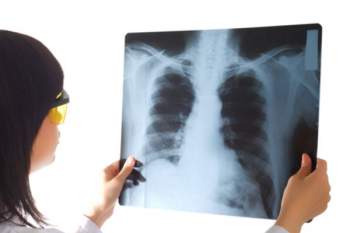
Stage I Mesothelioma

Stage I Pleural Mesothelioma What is Stage I Pleural Mesothelioma? Pleural mesothelioma is the most common form of mesothelioma, comprising over two-thirds of all mesothelioma diagnoses. Pleural mesothelioma affects the lining of the chest cavity and lungs. The pleura refers to the membrane that surrounds a human’s chest and lungs. This membrane (commonly referred to as the mesothelium) lines a number of body cavities. Although the pleura surrounds the lungs, cancer of this lining is not actually classified as lung cancer. Similar to all forms of mesothelioma, pleural mesothelioma may be extremely complex to diagnose. Because of this difficulty and because the disease is linked to habitual asbestos exposure, you must immediately inform your doctor regarding prolonged asbestos contact if applicable. What is the First Stage of Pleural Mesothelioma? As is common with all forms of cancer, pleural mesothelioma evolves through distinct stages. Stage 1 Pleural mesothelioma is the first stage of the condition. During this phase, pleural mesothelioma is most treatable, yet far harder to detect. Oncologists and other medical professionals use several systems to classify the stages of various forms of cancer. With pleural mesothelioma, there are three distinct systems used: • TNM • The Brigham System • The Butchart System The Butchart System utilizes Roman numerals to categorize pleural mesothelioma patients according to how far the disease has evolved or progressed. TNM, which stands for tumor, node and metastasis, is utilized to describe the progression of pleural mesothelioma. Within each category of this system there are five subcategories, numbered 0-4, to identify the extent of the tumors. And lastly, the Brigham system is used to describe whether or not the lymph nodes are affected and if the tumor can be surgically removed. Stage 1 Pleural mesothelioma within the Butchart model describes a patient whose tumor is limited to one side of the chest. In this stage, the tumor may appear on the surface of the lung, the mesothelium (the visceral lining surround ding the diaphragm or heart), but has not yet impacted the inner chest cavity. Stage 1 Pleural mesothelioma within the Butchart System is treatable; however, the associated symptoms are not readily observable and may be mistaken for another condtion. Stage 1 Pleural mesothelioma under the TNM classification model would describe a tumor that is confined to one location, and has thus, not metastasized or spread to the lymph nodes. Alterations in this classification would signify a growth in the tumor, still without affecting the lymph nodes. Stage 1 Pleural mesothelioma in the Brigham system signifies that the tumor has not spread to the lymph nodes. Because of this relative confinement, Stage 1 Pleural mesothelioma may be removed through surgery. The surgery; however, will not preclude a return of the malignancy.


















